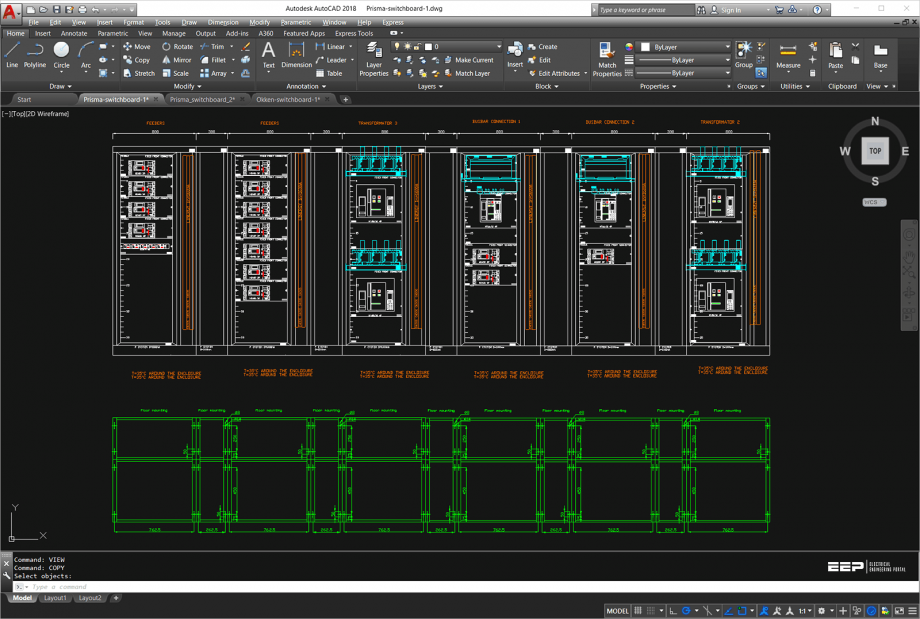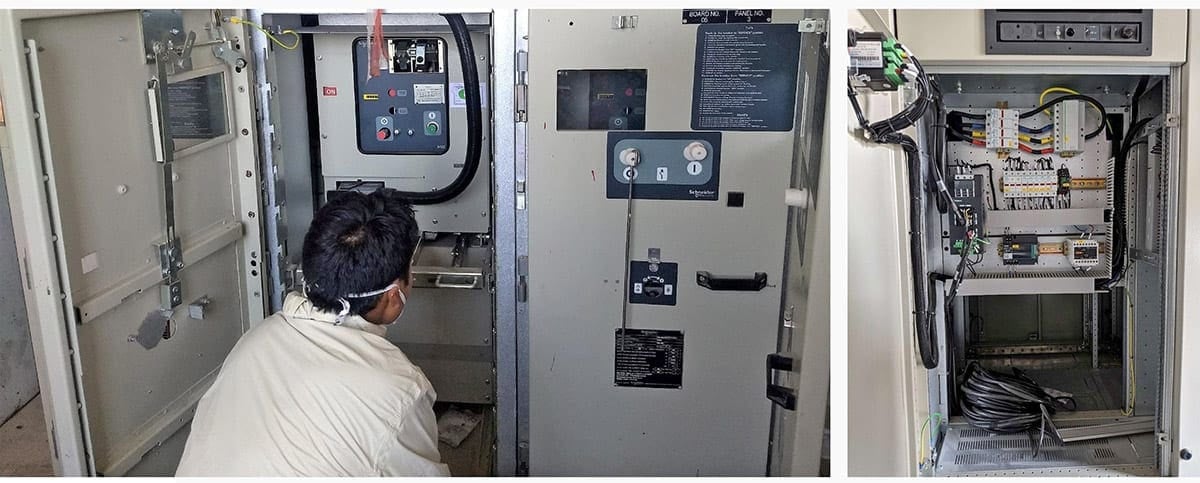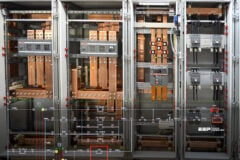LV switchgear layout: Design & Size
Low voltage (LV) switchgear is a broad terminology that includes a wide range of equipment like circuit breakers, switches, offload isolators, MCCBs, etc. within the 1 kV rating required to protect the LV system. The most common use of LV switchgear is in the LV distribution board which further comprises multiple segments like the main incomer, sub-incomers, feeders, etc. the size, configuration, and physical layout for switchgear vary as per specific requirements and standards.

In this article, we will discuss multiple factors to consider for sizing and designing the layout of LV switchgear for real-world application. The design engineer must go through various phases and iteration before finalizing the layout, which later is realized physically.
Original Equipment Manufacturers (OEMs) and independent manufactures produce thousands of LV switchgear assemblies each year, and properly designed layouts are mandatory to ensure that it meets the requirements.
- Classification and critical features
- LV switchgear introduction and functionality
- Layout design and construction details
- Bonus – AutoCAD drawings and pictures
1. Classification and critical features
The switchgear is of different type based on the voltage level at which it operates. HV switchgear operates at a voltage level of above 33 kV. MV switchgear operates at the voltage level of 33 kV and below. Likewise, LV switchgear operates at the voltage level of 1.1 kV maximum.
Irrespective of particular voltage levels, switchgear are known for their complete reliability, quick operation, and absolute isolation compared to other similar devices.
Figure 2 – MV switchgear cubicle (Left) and LV switchgear cubicle (right) inspection


Figure 1 displays the internals of cubicles of typical MV and LV switchgear. Physically, higher voltage creates extra complexity because of the higher risk of arc flashes and insulation failures. Apart from that, MV and LV switchgear shares a lot of similarities in terms of design and construction.
There has been substantial advancement in technology which started from the simplest form of switchgear, like a tumbler switch used widely for controlling small lights and household circuitry.
Membership Upgrade Required
This content is not available in your premium membership plan. Please upgrade your plan in order to access this content. You can choose an annually based Basic, Pro, or Enterprise membership plan. Subscribe and enjoy studying specialized technical articles, online video courses, electrical engineering guides, and papers.
With EEP’s premium membership, you get additional essence that enhances your knowledge and experience in low- medium- and high-voltage engineering fields.
Black Friday Deal 💥 – Save 20% on Pro Plan with code BLACKFRIDAY
Copyright Notice
This technical article is protected by U.S. and international copyright laws. Reproduction and distribution of PDF version of this technical article to websites such as Linkedin, Scribd, Facebook and others without written permission of the sponsor is illegal and strictly prohibited.© EEP-Electrical Engineering Portal.
Related electrical guides & articles
Premium Membership
Bishal Lamichhane
Electrical Engineer (B.E Electrical, M. Sc Engineering) with specialization in energy systems planning. Actively involved in design and supervision of LV/MV substations, power supply augmentations and electrification for utilities and bulk consumers like airports and commercial entities. An enthusiast and scholar of power systems analysis.Profile: Bishal Lamichhane










